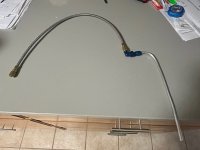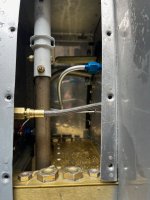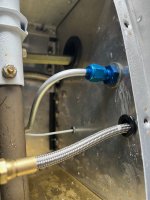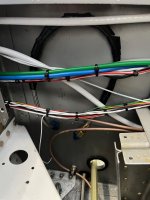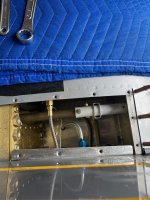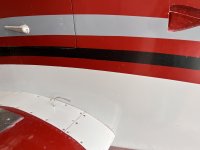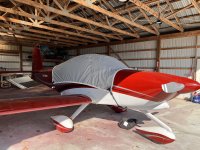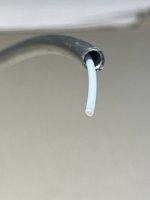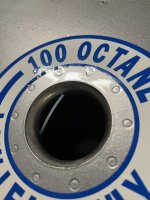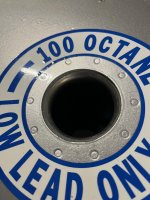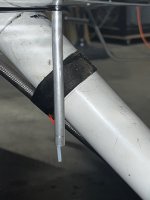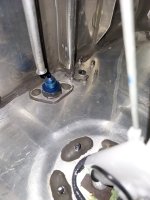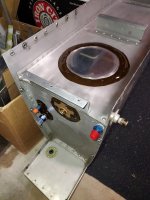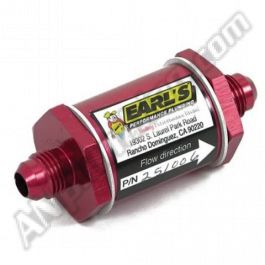Lew Gallagher
I'm New Here
Upon first fuel fill on Grant Smith's RV-10, there was a tiny leak from the vent tube on the pilot's side. The other end of the vent tube by the filler cap was above the fuel level. When I researched it I found others that had this problem with quick build wings. It is due to the flare nut on the inside of the tank not being tightened enough so that the gas leaks into the vent tube when that union is under gas level. I found a picture of the tool that others have used to tighten that nut reaching in through the hole after removing the float sending unit. I made my own tool and tightened the nut which stopped it some but not all. Further research showed that someone cut an access hole in the spar side of the tank, found and fixed a bad flare. I was resigned to eventually doing something similar when an EAA member, Tim Crouch, remembered how his RV-9 vent tube was designed - which led to my solution.
I drilled two holes in the fuselage wall in the wing root at the vent tube location, had a 26" Teflon hose with fittings made, connected one end to the tank fitting, ran the hose through the first hole in the fuselage, ran the hose up to the bottom of the door sill between the fuse wall and the interior kick plate, and back down through the second hole with a 90 elbow which connects to the original vent tube down through the grommet through the lower wing root faring.
Done. This keeps any leakage at the faulty flare inside the tank from going above the fuel level since the loop at the top of the interior hose is above the fuel level in the tank. As fuel is used, air is easily drawn past the faulty flare until the fuel level is below that flair which then drips back into the tank.
Done! I'll attach pictures.
Later, Lew
I drilled two holes in the fuselage wall in the wing root at the vent tube location, had a 26" Teflon hose with fittings made, connected one end to the tank fitting, ran the hose through the first hole in the fuselage, ran the hose up to the bottom of the door sill between the fuse wall and the interior kick plate, and back down through the second hole with a 90 elbow which connects to the original vent tube down through the grommet through the lower wing root faring.
Done. This keeps any leakage at the faulty flare inside the tank from going above the fuel level since the loop at the top of the interior hose is above the fuel level in the tank. As fuel is used, air is easily drawn past the faulty flare until the fuel level is below that flair which then drips back into the tank.
Done! I'll attach pictures.
Later, Lew



